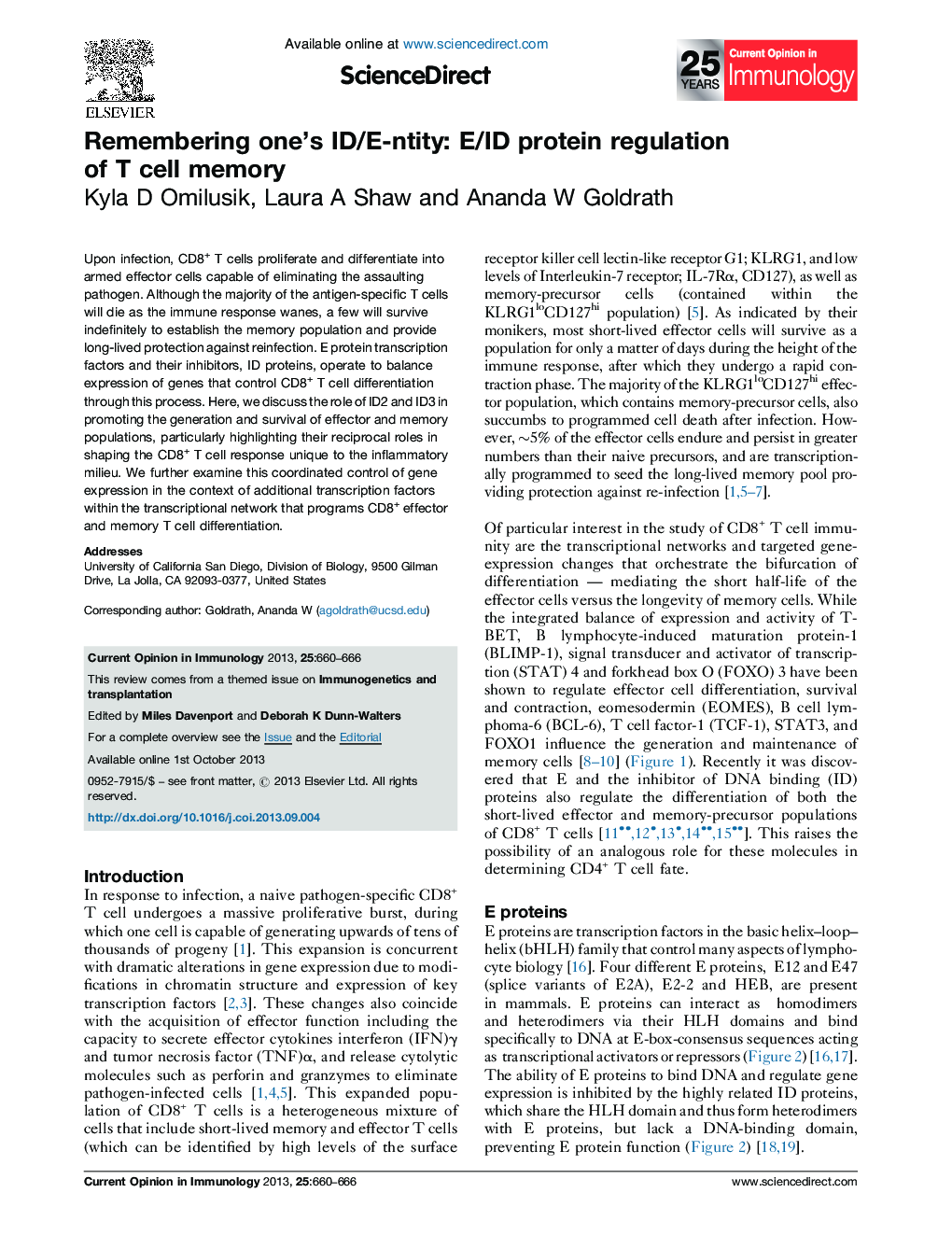| Article ID | Journal | Published Year | Pages | File Type |
|---|---|---|---|---|
| 3345837 | Current Opinion in Immunology | 2013 | 7 Pages |
•E and ID proteins control many aspects of CD8+ T cell differentiation.•ID2 mediates effector cell survival and differentiation to memory.•ID3 marks cells as memory precursors and maintains the longevity of these cells.•ID2/ID3 coordination, controlled by the infection milieu, shapes the CD8+ T cell response.
Upon infection, CD8+ T cells proliferate and differentiate into armed effector cells capable of eliminating the assaulting pathogen. Although the majority of the antigen-specific T cells will die as the immune response wanes, a few will survive indefinitely to establish the memory population and provide long-lived protection against reinfection. E protein transcription factors and their inhibitors, ID proteins, operate to balance expression of genes that control CD8+ T cell differentiation through this process. Here, we discuss the role of ID2 and ID3 in promoting the generation and survival of effector and memory populations, particularly highlighting their reciprocal roles in shaping the CD8+ T cell response unique to the inflammatory milieu. We further examine this coordinated control of gene expression in the context of additional transcription factors within the transcriptional network that programs CD8+ effector and memory T cell differentiation.
